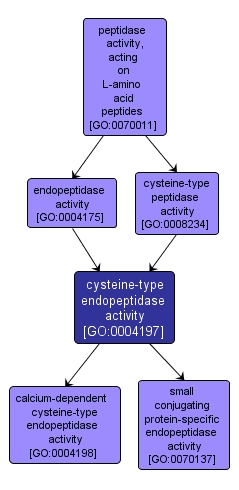GO TERM SUMMARY
|
| Name: |
cysteine-type endopeptidase activity |
| Acc: |
GO:0004197 |
| Aspect: |
Molecular Function |
| Desc: |
Catalysis of the hydrolysis of internal, alpha-peptide bonds in a polypeptide chain by a mechanism in which the sulfhydryl group of a cysteine residue at the active center acts as a nucleophile. |
Synonyms:
- lysosomal cysteine-type endopeptidase
- thiol endopeptidase activity
|
|

|
INTERACTIVE GO GRAPH
|














